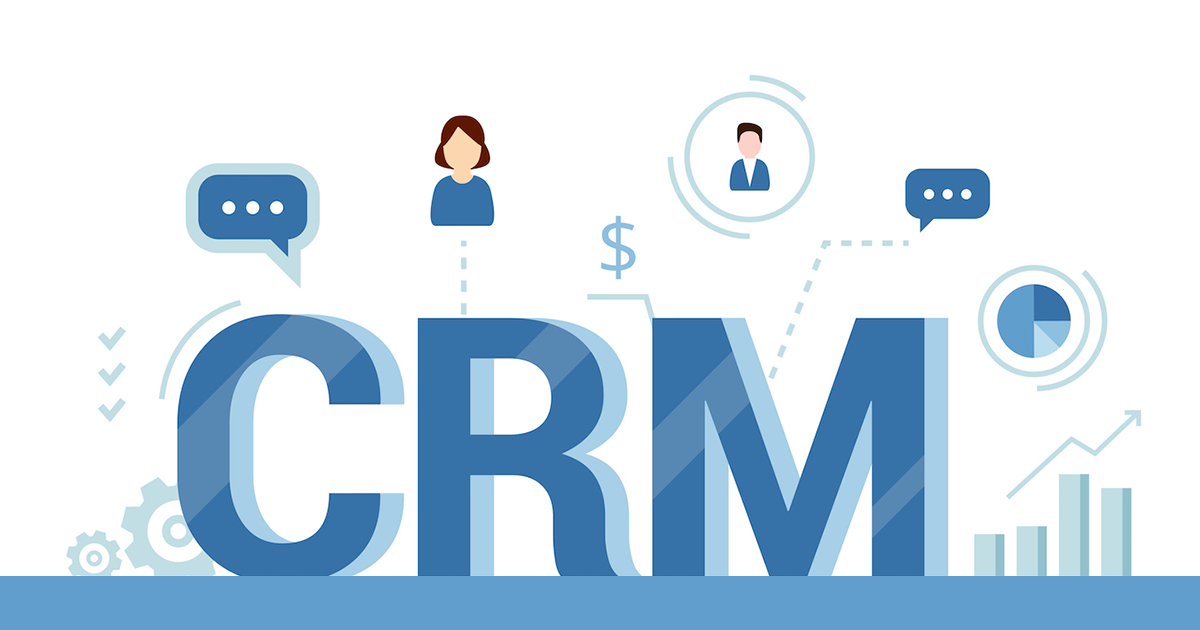Gone are the days when you could send identical marketing messages to thousands of customers and still receive a pretty good response and generate good revenue. We are now living in a time where customers are more educated, have more choices, and have higher expectations than ever before.
As a result, one-to-one or personalized marketing strategies have become the utmost critical for businesses to stand out from the crowd or remain relevant in this rapidly changing business environment. Though there are numerous strategies for increasing your marketing ROI, the most effective technique is the effective use of CRM data.

Looking for CRM Software? Check out SoftwareSuggest’s list of the best CRM Software solutions.
This article describes what customer relationship management (CRM) is, why it’s essential, and how to use CRM data to optimize promotion ROI. Let’s start with a definition of CRM.
What Is CRM & How CRM Data Could Be A Goldmine If Used Effectively?
Simply put, CRM– Customer Relationship Management is a tool that assists organizations in providing a unique and seamless experience for their customers, as well as building stronger relationships, by providing a complete picture of all customer activities, tracking sales, organizing and prioritizing opportunities, and facilitating cross-departmental collaboration.
Furthermore, CRM data can be a valuable asset if you know how to use it effectively. Using these data, you can monitor and comprehend customers’ psychology or shopping habits.

Besides, the company may also use these data to determine whether its marketing strategy is on track or needs to be tweaked. Overall, if used correctly, CRM data would be a goldmine for the business in every sense.
Now let us understand how CRM software data can help you make the most of your promotion.
How to Maximize ROI on Your Promotion Using CRM Data?
When it comes to using CRM data to maximize ROI on your promotion, there are certain tips and tricks to consider. However, for your convenience, we’ve only covered the top seven tips in this blog. Without further ado, let’s go over each tip in detail.
1: Integrate Your CRM Software With Other Applications
First and foremost, integrate your CRM software with other tools and applications that your organization uses to optimize the use of CRM data. This procedure aims to increase the amount of knowledge you have about your customers and create a centralized database.
When all of your tools and applications are integrated with CRM, your database will become more information-rich and effective. This data will not only assist your sales and marketing team in providing a personalized and seamless customer experience but will also help them in developing a successful marketing campaign.
2: Train Your Employees
The usefulness of any CRM software or CRM data is heavily dependent on how your team operates it. No matter how advanced or modern the tool’s features are, it will be ineffective if employees do not know how to use it.
Therefore, once you’ve integrated the CRM software with other tools and applications, your next task should be to train your employees. On the other hand, employees with proper CRM training have a better understanding of CRM, their responsibilities, and the knowledge and skills required for the job.
This will also boost their self-esteem, allowing them to use CRM software data more effectively, and as a result, produce a better outcome. As a result, if you want to get the most out of your CRM data, you’ll need to invest in training your staff.
3: Examining The Origins And Destinations Of CRM Data
The next step should be to investigate the entry and exit gates of the CRM feed. This examination will assist you in comprehending the landscape of your data and obtaining valuable insights.
Get a clear idea of how the marketing team has been using this data up to this point and what improvements can be made.
This exercise will also assist you in gaining an understanding of the various types of data available, their sources, formats, and how to make effective use of it, among other things. In addition, it is expected that the CRM data will contain some corrupted, duplicate, or incomplete information. Make sure you correct these errors and ensure that the data is error-free.
4: Segmentation– Putting The Data Together
Another crucial step in maximizing ROI promotion with CRM data is segmentation. Segmentation is a common practice to understand customers by categorizing them into groups, i.e., segments that exhibit similar behaviors and satisfy a particular need. This exercise also entails creating various engagement methods for different consumer segments.

Customer segmentation can be accomplished in a number of ways. For example, based on demographics, product affinity, order status, and so on. Let’s take a quick look at some of the popular segmentations.
Based on Order Status
- First-time Customers
- Customers with Abandoned Carts
- Customers with Cancelled Orders
- Repeated Customers
- Loyal Customers
Based On Product Affinity
- Products or categories viewed
- Products or categories purchased
Based on Demographics
Use CRM data to segment your customers and, ultimately, create a tailored strategy for each segment that strengthens and increases the effectiveness of your marketing strategy.
5: Monitor Customers’ Purchasing Habits
CRM data can also be used to monitor consumer purchasing patterns. Consumer buying behavior refers to what customers do before purchasing a product or service.
It will help us understand why customers make the purchases they do, what factors affect their decisions, and how our buying trends are evolving with time. This knowledge will eventually assist you in devising a successful strategy for the future.
6: Use Purchase History To Target Customers
Utilize segmented CRM data to target individual groups of customers. You can learn about a customer’s behavior by looking at their buying history. It will also tell you which customers are potential customers, recent customers, first-time customers, repeat customers, and lapsed customers.

Based on these customers’ buying history, you may formulate a customized strategy for each of these groups and target them more effectively.
7: Interact With Your Social Media Audience
Most high-end CRM software includes social listening features that enable you to monitor your audience’s social media activity. Use CRM data to learn more about your consumers’ views about your brand, their interest in your products, and your strengths and weaknesses.
Also, keep track of which social media campaigns are succeeding and which are failing. Then utilize this knowledge to chalk out a more effective strategy.
Final Thought:
All software’s are useful only if you know how to operate them effectively. CRM is no exception. CRM data, if used correctly, can be a goldmine for your company in every sense. It centralizes the entire process, provides insights into the marketing campaigns, identifying your strengths and weaknesses, improves customer retention rate, and helps you outrank your competitors.
Need Any Technology Assistance? Call Pursho @ 0731-6725516




